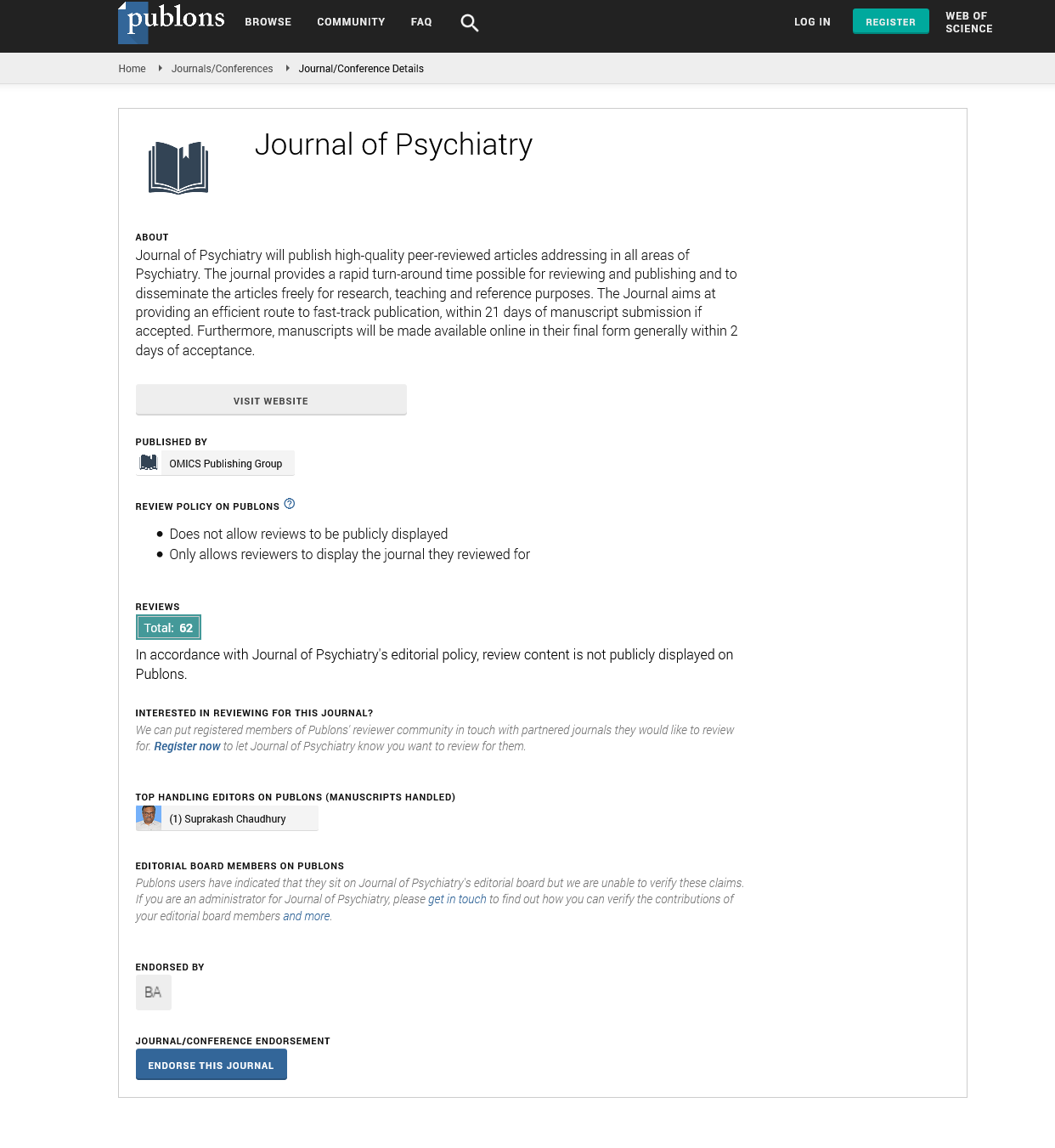Indexed In
- RefSeek
- Hamdard University
- EBSCO A-Z
- OCLC- WorldCat
- SWB online catalog
- Publons
- International committee of medical journals editors (ICMJE)
- Geneva Foundation for Medical Education and Research
Useful Links
Share This Page
Open Access Journals
- Agri and Aquaculture
- Biochemistry
- Bioinformatics & Systems Biology
- Business & Management
- Chemistry
- Clinical Sciences
- Engineering
- Food & Nutrition
- General Science
- Genetics & Molecular Biology
- Immunology & Microbiology
- Medical Sciences
- Neuroscience & Psychology
- Nursing & Health Care
- Pharmaceutical Sciences
Psychiatric morbidity in infertility patients in a tertiary care setup
Euro Global Summit and Medicare Expo on Psychiatry
July 20-22, 2015 Barcelona, Spain
Soumya Sachdeva
Posters-Accepted Abstracts: J Psychiatry
Abstract:
Context: Infertility is regarded as a trigger for psychological morbidity. Infertile couples often suffer from anxiety, depression and lack of self confidence. Aims: To study the demographic factors associated with infertility in a tertiary care setup and to determine the levelof anxiety and depression associated with it by using standardized scales. The Study protocol also included studying thevarious coping strategies employed by these patient groups. Methods and Material: A prestructured questionnaire based study conducted for a span of 6 months. The study population included the patients attending the infertility and the family planning outpatient department. We applied the Hospital Anxiety and Depression scale (HADS) and the Becks depression Inventory (BDI). Brief COPE Inventory was applied to look for the various coping measures that are employed by the anxious and depressed patients. Statistical analysis: Data analysis was done using SPSS ver20. Results: A total of 280 study subjects were included in the study; which included 140 women from the infertility clinic and 140 from the family planning OPD. A total of 56.4% (79/140) of the females were found to be suffering from depression and 68.9% (96/140) of the females were found to be suffering from anxiety and depression both. Seven risk factors were found to be significant for depression based on the BDI scale which were significant on univariate analysis were increasing age, lack of employment, abortion, no. of children, support from spouse, relatives support, menses, gynecological infections, duration of infertility and previous treatment of infertility. The independent risk factors causing depression in the females were found to benumber of abortion, no of children, cost of treatment and the duration of infertility and previous treatment of infertility. Six risk factors were found to be significant based on the HADS scaleon univariate analysis were increasing age of the study subjects, lack of employment, education, abortion, no of children, support from spouse, support from relatives, menstrual disturbances, gynecological infection, duration of infertility and previous treatment for infertility. The Independent risk factors associated with anxiety and depression on binary logistic regression were unemployment , duration of infertility and previous treatment for infertility and the cost of treatment. The most common coping method employed by depressed women was venting 72.2% (57/79) followed by behavioral disengagement 70.9% (56/79); whereas the most important coping method employed by the anxious and depressed women was behavioral disengagement 71.9% (69/96). Conclusions: Anxiety and depression is common among patients suffering from infertility and measures should be taken to alleviate it.

